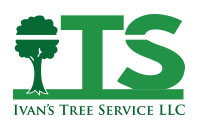Is Your Tree Dying?
As Summer winds down and the leaves start to change, you may be taking a closer look at the trees in your yard. You may also notice that you have a tree that looks unhealthy and wondering to yourself, “is my tree dying?” It can be hard to know, but dead and dying trees can be a big danger to your family and property so it’s an important question to ask yourself.
There can be some key indicators of the health of your trees. One of the first signs is an excessive amount of sticks in your yard. Every tree drops sticks from time to time, but if you suddenly notice that there are more sticks in your yard, it could indicate that you have an issue, especially if the sticks are located around the area of a specific tree or trees.
Another sign that you shouldn’t ignore is shedding bark. This can be remedied depending on the severity of the shedding. If you’re unsure whether your tree bark is shedding and can be saved, you should reach out to a tree professional, like us, to visit your home and give an assessment.
If you notice material that looks like sawdust at the base of your tree, that can be a sign of tree rot, also known as heart rot. This is the inside of the tree, or the heart, rotting on the inside. Additionally, noticing fungus on your tree’s trunk can be a sign of rot as well.
A leaning tree is another key indication that your tree may be unhealthy. Trees naturally grow straight so if you notice that your tree is leaning, especially if you hadn’t noticed the lean before, that is an excellent sign of an issue with roots or trunk.
In Minnesota, we typically have windstorms and thunderstorms during the summer. This may cause injuries to your trees like broken branches, or open wounds on your tree. Clean cuts from a professional allow the tree to heal naturally, however if you notice torn branches or large cracks you should contact a tree professional to evaluate the damage and put together a care plan for your tree.
Most trees change leaves in the fall, however, if you notice that your tree has an area that is without leaves, or leaves that are changing differently or faster than other areas of the tree, or other trees in the area, that can be an indication of pest infestation or other damage.
Speaking of pest infestation, there can be some noticeable indicators of insects in your tree. The first thing you may notice is the leaves. Inspect the leaves and if you notice lots of holes in the leaves, spots on the leaves, or abnormal sizes or shapes of your leaves it could indicate that your tree is experiencing bug infestation. Secondly, inspect the trunk for small holes, discoloration, or live bug activity going on.
If you, your neighbors, or the city has done any excavating or landscaping and you notice that your trees are looking differently or growing more slowly than before, that could be a sign of root damage or injury.
Similar to what we mentioned above about excessive sticks on the ground, if you notice that the branches of your tree are brittle or easily broken it could be a sign of a larger issue going on.
Scratch the bark off your tree in a small area. If you don’t see green underneath, that could be a sign of lack of nutrients to your tree. This isn’t necessarily an indication of the need for removal but it’s better to catch issues early before they become more severe and start showing other signs listed above.
If your tree has any of these signs, or if you just aren’t sure, we recommend that you reach out to a trained and licensed professional for evaluation.
Fall is the ideal time to evaluate your trees in preparation for them to go dormant. This allows your trees to be trimmed or removed with the least damage to the tree and surrounding trees. So give us a call today to set up a time to give your trees a check up and make sure that you don’t have any surprises with your trees during the winter months. Our goal is to do what we can to repair and preserve your tree and we can work with you to keep your trees happy and healthy for years to come!
